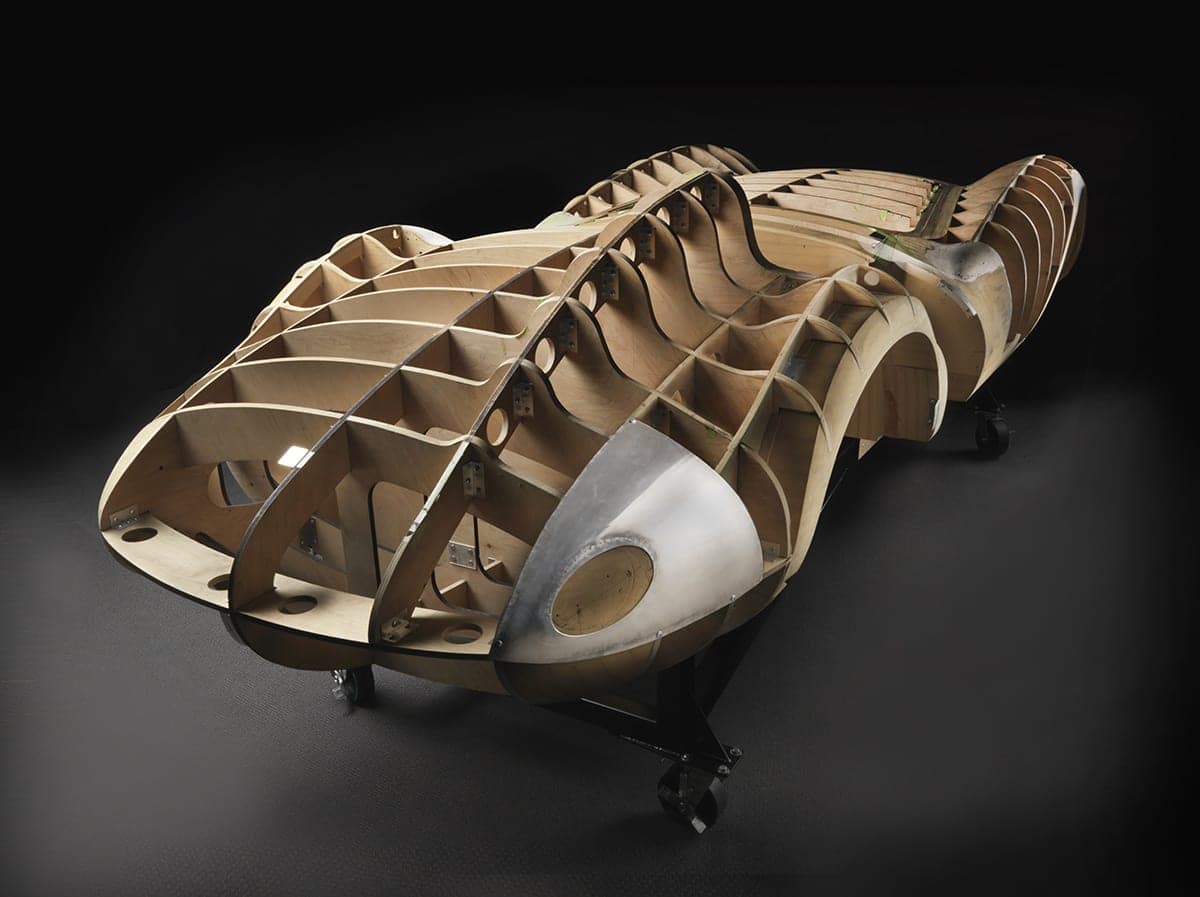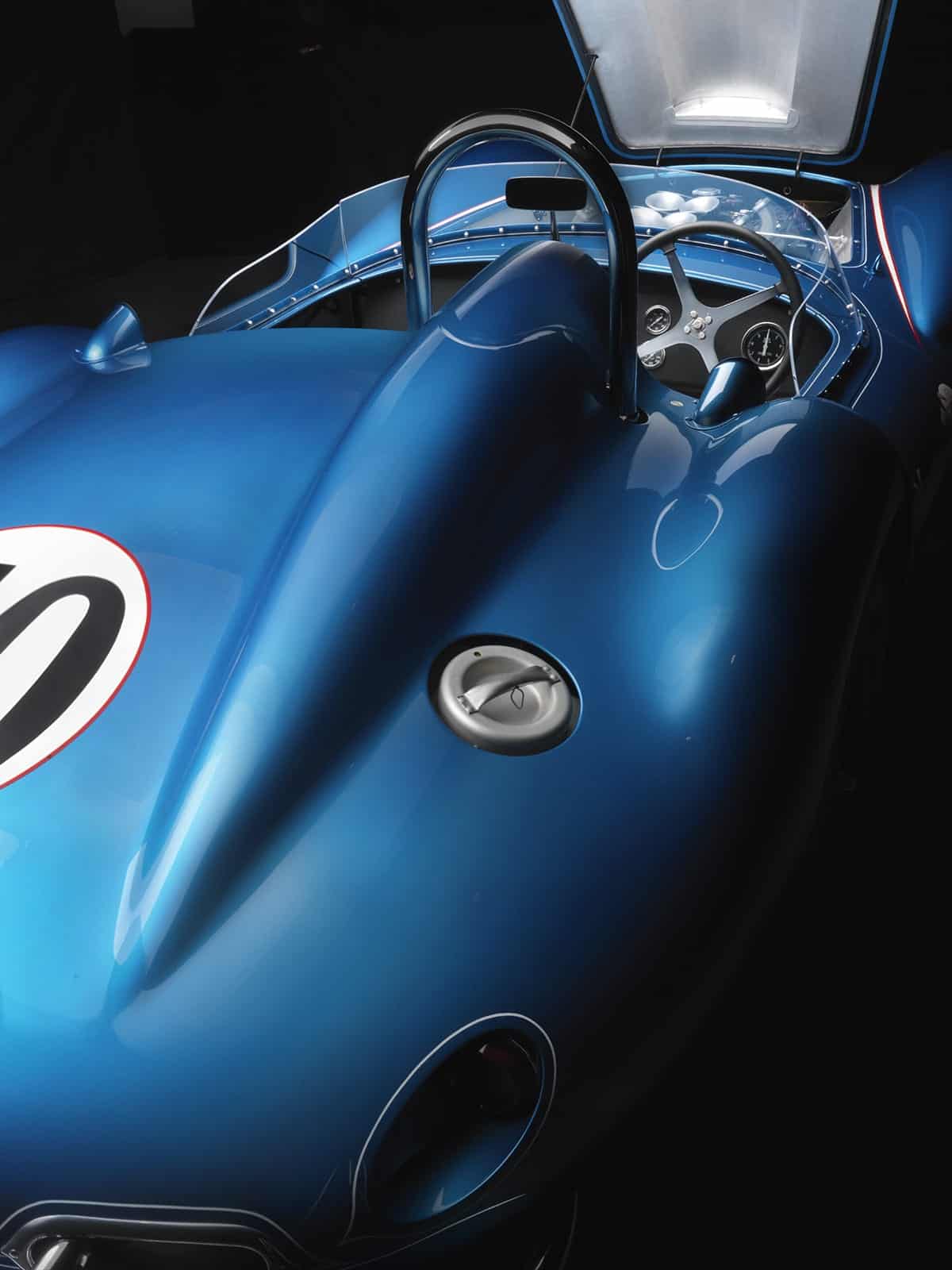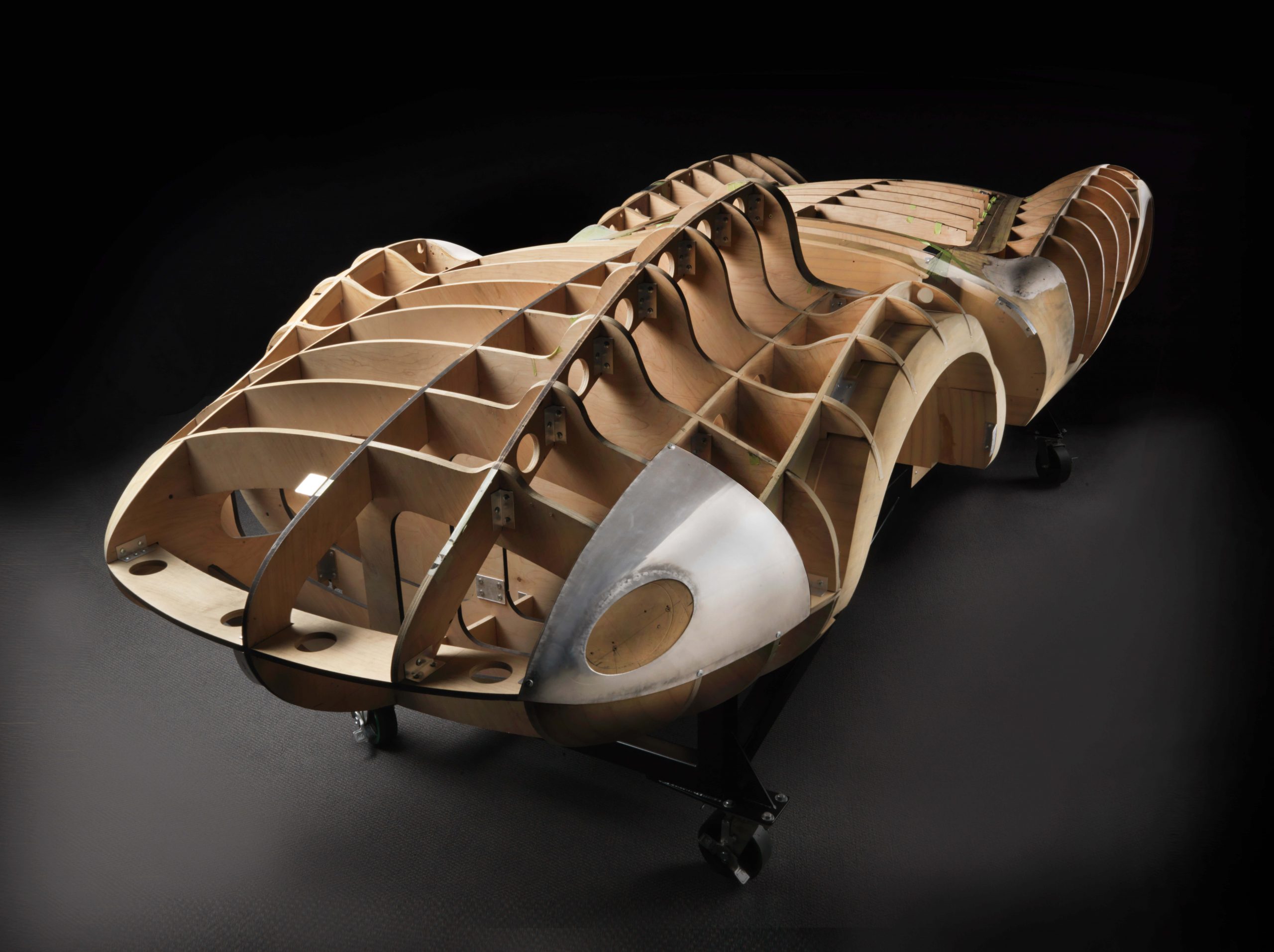Tech Specs
Eight-cylinder 90 degree vee engine, overhead valves, Hilborn fuel injection, 339 cubic inches, 365 hp at 6000 rpm.
Before/After
1958 Scarab


About the 1958 Scarab Sports-Racer
Of the eight Scarab racers built, brain-children of 22-year-old Lance Reventlow − whose father was a European count, whose mother was heiress to the Woolworth fortune, and whose wife at the time was actress Jill St. John − four were astounding successes and four were spectacular failures. An intensely competitive racer, Reventlow recognized that the European racing factories always kept the latest racing models for their own teams and that only by producing his own car could he achieve technical equality.
Thus, in Warren Olson’s sports car shop in West Los Angeles, Reventlow commenced building an American car to take European long-distance racing by storm. A 301-cubic-inch overbored version of Chevrolet’s small block 283 V-8 seemed right married to a Corvette four-speed gearbox. This powertrain was mounted in a light 127-pound space frame chassis wrapped with an aluminum skin to the configuration you see. The resulting racer was spectacular. Early testing showed the efficacy of the tapered-shim adjustable de Dion rear suspension, a clever innovation by Dick Troutman. Engine stroke was quickly increased to enlarge displacement to 339 cubic inches.
Alas, between creation of the Scarab concept and reality, the European sports car rules were changed to permit engines only up to 183 cubic inches (3.0 liters). An Offy engine was tried in the third Scarab − the car on display − but with the dismal results Briggs Cunningham suffered when he tried the same thing in his C6R Le Mans car. Said Scarab development engineer Chuck Daigh of the Offy: “It was 100 pounds heavier than the Chevy and had 100 horsepower less.” So the Chevy went into this car too − and in 1958 the Scarabs went racing, but only in the U.S., Daigh and Reventlow driving. No car was more successful in SCCA B-Modified during this period.
Scarab sports-racers remained competitive well into the 1960s, long after Reventlow had retired from the scene. The cars were victors twice: over the best that Europe had to offer during the front-engined era and then again when the “technically superior” European rear-engined cars came on the scene. That’s impressive.
Photos – Peter Harholdt



























